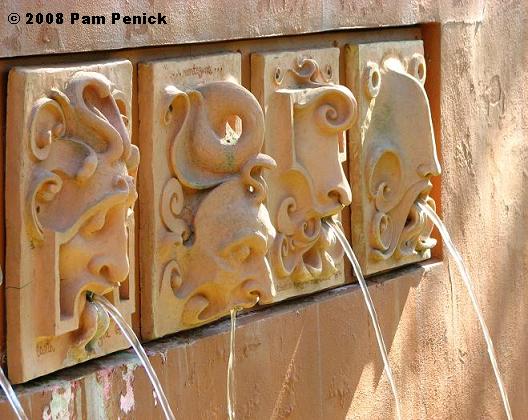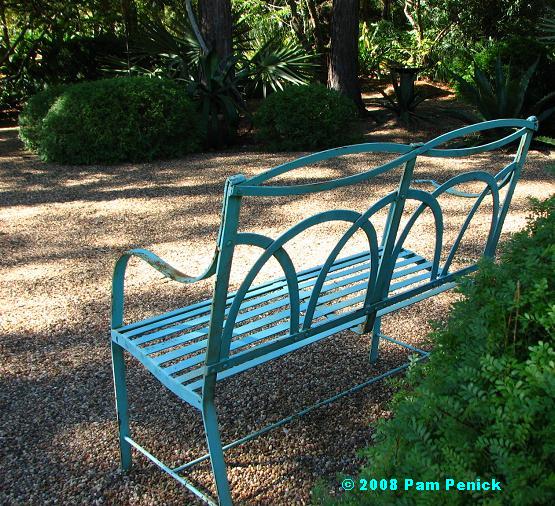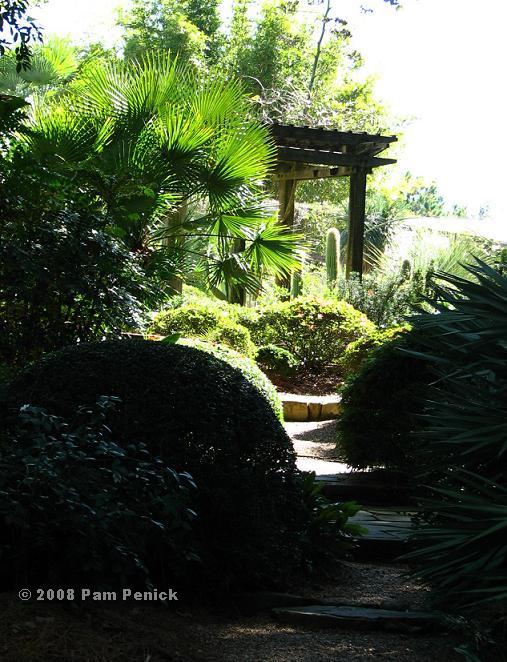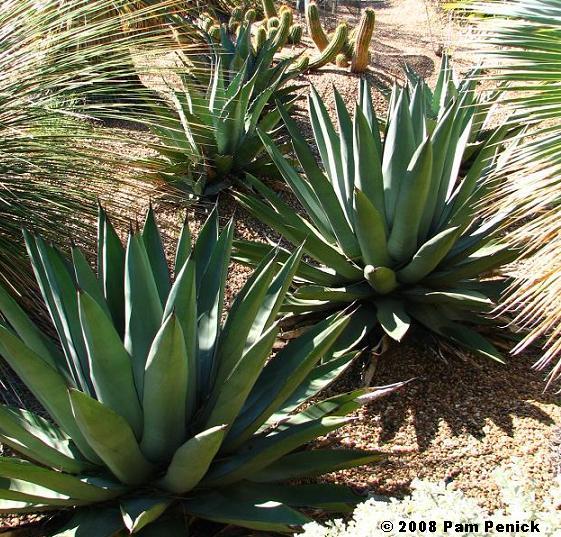My article about John Fairey's Peckerwood Garden wins award
Last year I wrote an article for Garden Design magazine about Texas plantsman John Fairey and Peckerwood Garden, his decades-in-the-making collector’s garden in Hempstead. “The Plant Man” appeared in the June 2012 issue of Garden Design (now, sadly, out of business).
I’m surprised and happy to tell you that my article has won a 2013 Silver Award of Achievement, in the Writing–Magazine Article category, from Garden Writers Association’s Garden Media Awards Program.
I’m grateful to the awards committee for the honor. And I’m especially indebted to John Fairey, who graciously opened his home and garden to me and shared his story over the course of a couple of interviews. Anyone who thinks gardening a dull hobby has never heard Mr. Fairey talk about his plant-hunting expeditions in Mexico, nor seen his charismatic dry garden, verdant shrub garden, or arboretum of Mexican oaks. Peckerwood is open to the public for guided tours on specific dates throughout the year. If you’ve never been, do make plans to visit this tucked-away gem of a garden.
I’m republishing my article here in hopes of introducing you to two Texas treasures: Mr. Fairey and his garden. The images in this post are from a visit to Peckerwood in 2008. I’m long overdue for another photo-taking tour myself.
The Plant Man
A flora collector with a rare eye for design transforms a Texas landscape
John G. Fairey’s eyes widen when he is asked to name a favorite plant, as if he’s been asked to choose his favorite child. “Why, all of them,” he replies softly in a sandpapery Southern lilt. And given his surroundings — some 3,000 species of rare and endangered plants at Peckerwood, his 40-year-old, renowned private garden near the Texas town of Hempstead — you’re rather inclined to believe him.
Named for the Georgia plantation in Auntie Mame, Peckerwood has earned plaudits for its astonishing collection of plants — largely from Mexico and Texas but also Asia — and for the horticultural skill with which Fairey grows them. It also deserves attention for the artistic design of its landscape — unusual for the garden of a collector, in which acquisition often supersedes design considerations.
Fairey’s vision for Peckerwood, which includes a light-dappled woodland, several shimmering dry gardens, and a parklike arboretum, developed not gradually but in a transformative awakening during a trip to Mexico. An artist and professor of design at Texas A&M, Fairey had bought seven acres near Hempstead, an hour’s drive northwest of Houston, in 1971 as a country retreat. He planted azaleas, camellia, and other species familiar to him from his South Carolina childhood, but his interest in collecting plants wasn’t sparked until he met Texas plantsman Lynn Lowrey, who often trekked into Mexico to search out little-known species to bring back for propagation.
In the summer of 1988, Fairey joined Lowrey on one of his expeditions to the Sierra Madre Oriental mountain range in northeastern Mexico. They explored from desert to cloud forest, says Fairey, and searched for plants from dawn until after dark, by flashlight. The adrenaline high of the hunt hooked Fairey immediately, as did the evidence of the loss of fragile habitat caused by the overgrazing of goats and the sense that he could help save plants from extinction.
Over the years, Fairey returned to the Sierra Madre 100 times, fascinated by the variety and architectural beauty of the plants he found there. Back home he began using a newfound palette of sun-loving plants like yucca, agave, dasylirion, nolina, and dioon in his dry gardens and designing with shape and form, wind and sunlight, rejecting in one swoop both the English tradition of soft, flowering borders and the European model of formal framing and symmetry.
Today, plants reign supreme at Peckerwood, providing structure for garden rooms with their architectural forms and through massing of related species — “counterparts,” he calls them — from different parts of the world, like his screen of mahonia from both Asia and Mexico in the woodland garden. And as John Troy, a San Antonio landscape architect, points out, Fairey also plays up a feeling of surprise and dissonance by mingling species not normally seen together on this side of the border, like palms and magnolias, pines and agaves.
One encounters these arresting combinations throughout Peckerwood but especially in the sunny, dry garden on the west side of Fairey’s residence, a two-story, corrugated steel-sided structure with a shady porch and attached art gallery. In the dry garden, fine, rounded gravel surrounds the plants and flows between them, forming paths and creating a natural-looking “floor,” knitting the garden together with a consistent color and texture. To the northwest of the house, in the woodland garden, pine straw supplants gravel, mulching plants and quieting visitors’ footsteps. Throughout, paving, walls, and other hardscaping are kept to a bare minimum, enhancing the naturalistic look.
Fairey enjoys the act of planting and likes to experiment, digging things up and trying new combinations with such regularity that a friend once remarked he’d “never seen a plant at Peckerwood that wasn’t on the end of a shovel.” When siting plants, Fairey considers the play of light on leaves and the ever-present Texas wind, especially in the dry garden. During the blazing summer, that space is psychologically cooling thanks to an abundance of silver and blue-green leaves, like those of Yucca rostrata, a strappy Koosh ball of a plant that responds to every cooling breeze with a dazzling shimmer. Round forms and modernist geometry dominate here; spherical plant types like Echinocactus grusonii, Dasylirion longissimum, Nolina nelsonii, and Xanthorrhoea quadrangulata create a bouncy rhythm. Compensating for gully-washer summer thunderstorms and winter rains, Fairey elevates each plant for drainage on its own gravel hillock, “because I like mountains,” he laughs, a reference to his passion for exploring Mexico’s northeastern range. But Austin landscape architect James David sees the artist’s eye at work. “Individual plants are put on gravel pedestals for you to admire,” he says, “like buckets of hyacinths on display in a flower shop.”
“Every bit of the garden is thought through from a design standpoint,” says Bill Noble, director of preservation at the Cold Springs, New York-based Garden Conservancy. “If you know plants, then John’s collection will blow you away. If you don’t know the plants, you can still appreciate their beauty and the design of the garden.”
Because Peckerwood is such a unique repository and because Fairey is looking to the garden’s future, the Garden Conservancy is assisting him in transitioning it to a public entity. Asked what he would like for gardeners to take away from a visit to Peckerwood, which today encompasses 39 acres, Fairey says simply, “diversity.”
“John has expanded the palette of plants for gardeners in the South, Southeast, and Texas,” says Noble. “His garden has a lot to teach.” After a lifetime of teaching, Fairey remains himself an eager learner, continually experimenting with plants and treating his garden as an artist’s canvas on which he paints with light, foliage, and even the wind.
All material © 2006-2013 by Pam Penick for Digging. Unauthorized reproduction prohibited.






Congrats on a well deserved award Pam. I read this article in the mag. This and all you write about makes me want to tour all of Texas, but especially the gardens.
You are overdue for a visit, Lisa. —Pam
Congratulations on your article winning an award. It must be 10 years since I was at Peckerwood. I must go back there.
It’s just far enough from Austin to require planning for the road trip, Jenny, but it’s well worth it. —Pam
Very nice, Pam. And congratulations on your award! The gardens will be on my list for the next time I get to Texas. Cheers!
Their open days are limited, PP, so if a visit is high on your list be sure to consult the schedule before planning your trip. —Pam
Congrats Pam!
Thanks, Loree! —Pam
Wonderful article and congratulations on the award!
I’ve never been there and certainly need to correct that soon.
I’m sure you’d enjoy it, Shirley. There are lots of takeaways for our gardens in central Texas. —Pam
My envy at not being part of the group to visit Peckerwood that day is quickly overwhelmed by my awe of your “wordsmithing”. You completely capture the sense of man and place and deserve this award and many more. And as Jenny says, it IS time for another visit.
Thanks for your kind compliment, Vicki. 🙂 —Pam
Congratulations…..again. Seems you’ve been getting a lot of much deserved good news lately, for jobs well done.
I’ve never been to Peckerwood. But, it certainly looks like a wonderful place to see.
Thanks, Linda. Yes, it’s a bit of a surprise to find such a garden tucked away in small-town Texas. —Pam
Nice kudos; I think I’ll pass along to a colleague who just got a private tour there, as she would like this piece. Someday, I have to go.
What a lucky colleague. You’d especially enjoy this garden, I think, David. —Pam
Congratulations on a well deserved award! BTW, I just browsed the April 2013 issue of Garden Design today. There was not a word about ceasing publication. Did you get private word from them?
No, I read it about it online, Peter, over a month ago. The sad news is currently on the Garden Design website. —Pam
Fabulous article! You made me all nostalgic and I reread everyone’s posts from our Peckerwood trip. That was a great day!
That was a fun field trip, wasn’t it? We’re overdue for another. —Pam
And also, that is sad news about Garden Design. I was looking for it at Barnes & Noble a few weeks back, and that explains why I couldn’t find it.
Congrats, Pam! This is a wonderful article – the way you write…I feel as though I have been there. You take my spirit away with you as I read. I love the way you write!
Aw, thanks so much, Heather! 🙂 —Pam
Congratulations on this well-deserved award. Your write like you design gardens – great word pictures with some zingers thrown in for extra interest.
My friend and I have also enjoyed the word and eye-candy in your book.
And thanks for sharing this wonderful article. You made me remember I want to visit Peckerwood again before I leave for Montana.
Thank you for such a flattering compliment, Marilyn. I’m blushing! I’m also quite envious of your upcoming trip to Montana—lucky you! —Pam
I remember reading this article before noting it was by you and thinking what an unusually well-written and in-depth piece. Well-deserved award, Pam. And I’ll add here another congrats on the second printing of your book. You’re on fire, girl!
No wonder I’m sweating! 😉 Thanks so much, Denise. —Pam
Congratulations on the recognition, and on the second printing of your book. I glad spring is going so well for you.
Thanks so much, Les! —Pam